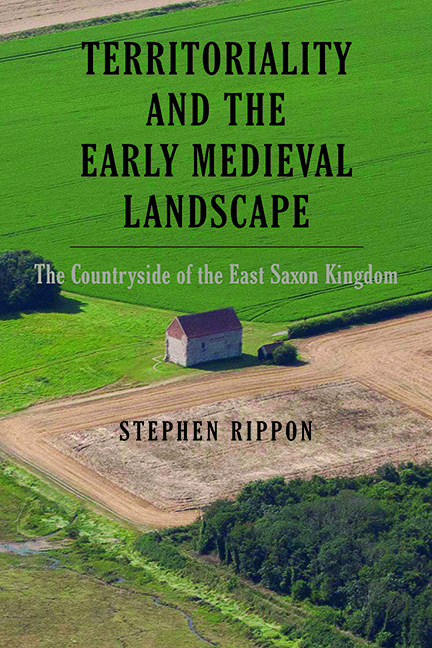Book contents
- Frontmatter
- Dedication
- Contents
- List of Illustrations
- List of tables
- List of Abbreviations
- Acknowledgements
- Glossary
- Preface
- Part I Background
- Part II The Early Folk Territories
- Part III Discussion and Analysis
- Appendix 1 Domesday Population Densities Across the ‘Rochford Peninsula’ Early Folk Territory
- Appendix 2 Sites Used in the Analysis of Animal Bone Assemblages
- Appendix 3 Sites Used in the Analysis of Charred Cereal Assemblages
- Bibliography
- Index
- Garden and Landscape History
Chapter 10 - And Another British Domain: The Western Districts, and Romanobritish Antecedents of Early Medieval Central Places
Published online by Cambridge University Press: 26 May 2022
- Frontmatter
- Dedication
- Contents
- List of Illustrations
- List of tables
- List of Abbreviations
- Acknowledgements
- Glossary
- Preface
- Part I Background
- Part II The Early Folk Territories
- Part III Discussion and Analysis
- Appendix 1 Domesday Population Densities Across the ‘Rochford Peninsula’ Early Folk Territory
- Appendix 2 Sites Used in the Analysis of Animal Bone Assemblages
- Appendix 3 Sites Used in the Analysis of Charred Cereal Assemblages
- Bibliography
- Index
- Garden and Landscape History
Summary
ACROSS THE NORTH-WESTERN part of the East Saxon kingdom – what was to become Hertfordshire – the now familiar pattern of early folk territories can be reconstructed using the same sources and techniques as were used in Essex, Middlesex and southwestern Suffolk (Figure 10.1). This is an area with diverse geology and soils, with a continuation of the Boulder Clay Plateau in the east, particularly heavy soils overlying clay-with-flints on the Chiltern dipslope to the west and the chalk escarpment to the north. To the south lay the Colne and Lea valleys, south of which was the London Clay that extends into Middlesex. The hundredal boundaries are extremely complex and appear to bear little relationship to the proceding early folk territories. In common with the claylands of central and northern Essex there is almost no evidence for fifth- to sixth-century Anglo-Saxon immigration, suggesting the survival of a substantial British population.
THE RIB AND QUINN VALLEY
The Rib and Quinn valleys drain the western fringes of the Boulder Clay Plateau, a landscape of very gently undulating valleys and particularly heavy soils on the interfluvial areas. At the centre of the Rib valley lay a substantial Romano-British small town whose Old English name – Braughing – commemorated the early medieval community who occupied that district: *Breahha + ingas or ‘people called after Breahha’ (Watts 2004, 81; Baker 2015, 261).
KEY INFORMATION
Possible folk name: Breahingas
Royal vill(s): ?Braughing
Minster church(s): Braughing
Possible meeting place: Wickham Hill in Braughing
Great estates (into which it fragmented): ?
Area: 205km2
Successor hundreds: none
Reconstructing the early folk territory
Braughing is first recorded in c.827–40 when Ceolberht, bishop of London, granted ten manentes (hides) at Breahingas (Braughing) to Sigeric, a ‘minister’ of King Wiglaf of Mercia: the grant was witnessed by Sigered, the last king of the East Saxons (S.1791; Gelling 1978, no. 165; Kelly 2004, no. 9). The hundredal meeting place is thought to have been on Wickham Hill near Puckeridge, the site of a deserted Romano-British small town on the Braughing–Standon parish boundary close to Puckeridge, where the sheriff's tourn was held (Anderson 1939, 33; Baker 2006, 175–62; Baker 2015, 261; Rowe and Williamson 2013, 65). Wickham (OE wīc-hām: Watts 2004, 677) is suggestive of some form of continuity in popular awareness of the Roman heritage of this place.
- Type
- Chapter
- Information
- Territoriality and the Early Medieval LandscapeThe Countryside of the East Saxon Kingdom, pp. 205 - 226Publisher: Boydell & BrewerPrint publication year: 2022



